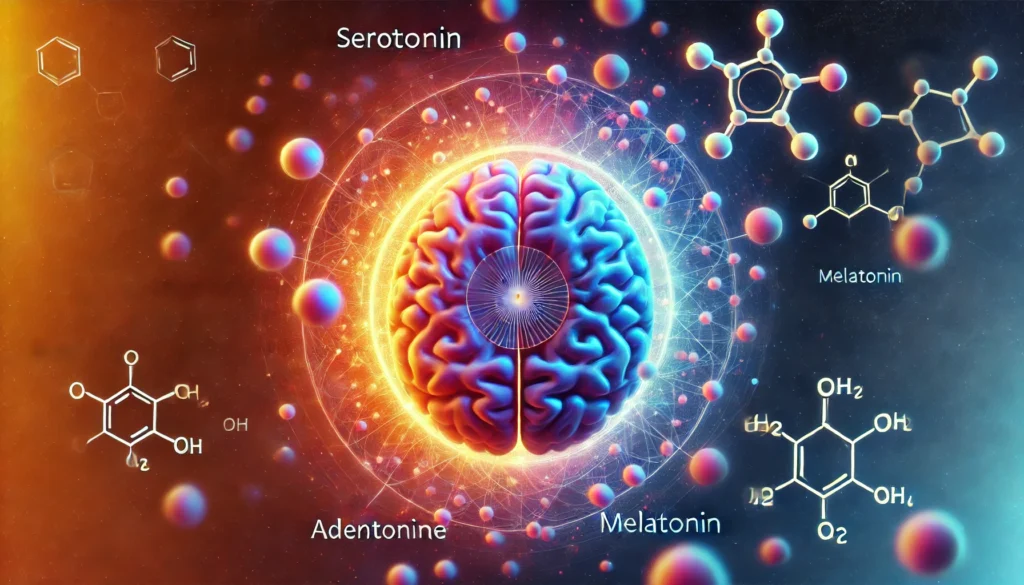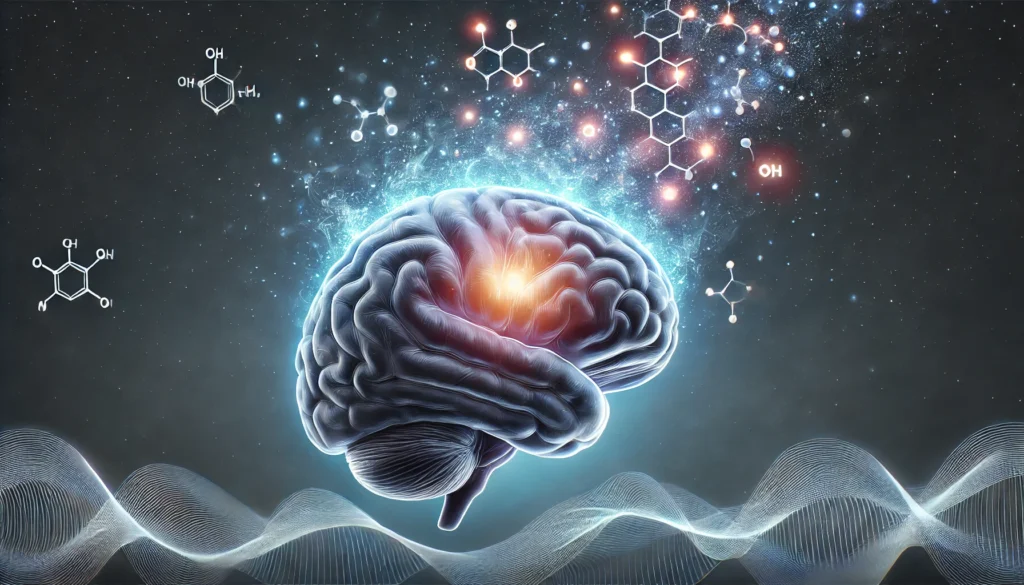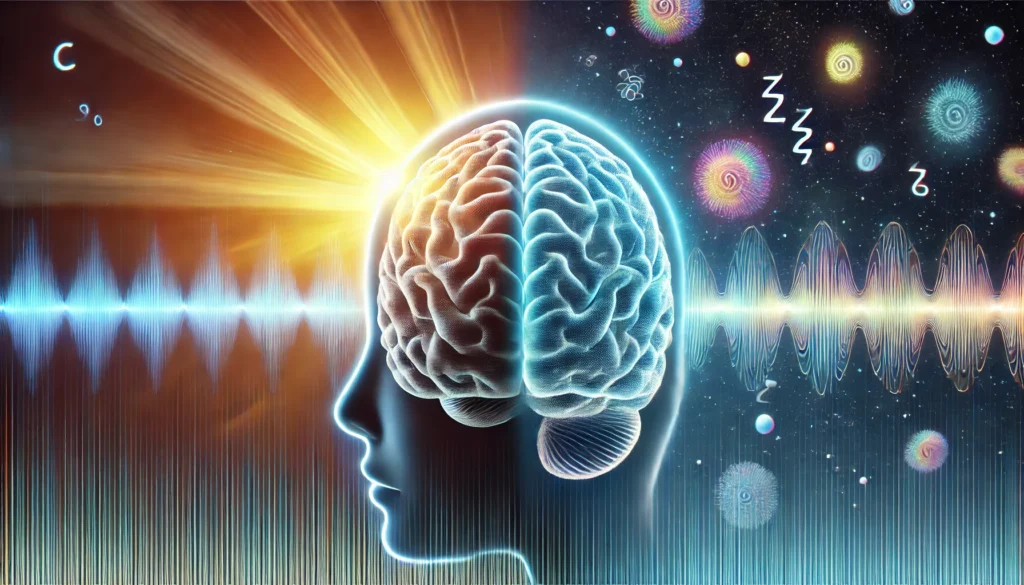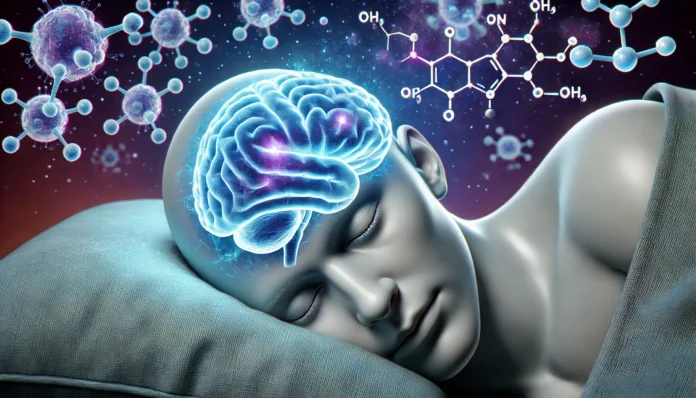Sleep, one of the most fundamental physiological behaviors, remains one of the most intricately regulated and least understood biological states. For many, the need to define sleep seems unnecessary—after all, it is a daily experience. Yet from a neurological and biochemical perspective, the scientific name for sleep is more than just “rest”; it is a highly orchestrated phenomenon shaped by a complex interplay of neural signals and chemical messengers. This article delves deep into the chemistry behind sleeping, explaining how the brain’s natural sleep chemicals regulate the sleep-wake cycle and how these neurochemical processes influence cognitive health and longevity. In doing so, we uncover how the chemical architecture of human sleep holds the key not only to rest and repair but also to brain health and extended life.
You may also like : Best Things for Brain Health: Expert-Backed Strategies to Keep Your Mind Sharp
Understanding the Scientific Word for Sleep and What It Really Means
To truly define sleep, one must approach it as both a behavioral state and a neurochemical event. The scientific name for sleep is often referenced in medical literature as “somnolence” or “somnus,” derived from the Latin root. In neurobiology, sleep is recognized as a reversible state of perceptual disengagement from the environment, marked by reduced motor activity and altered consciousness. Unlike unconsciousness caused by injury or anesthesia, natural sleep is regulated by predictable neurophysiological cycles and specific neurochemical changes in the brain.
Sleep is not a passive shutdown of brain function. Rather, it is an active, metabolically demanding process that involves intricate interplays between brain regions and signaling molecules. During sleep, the brain does not go dormant but rather shifts its activity to orchestrate memory consolidation, neural repair, and synaptic pruning. These actions require carefully timed fluctuations in neurotransmitters and neuromodulators that make up the chemistry behind sleeping. Understanding the scientific word for sleep within this context elevates it from mere rest to a pivotal biological state that sustains life and mental clarity.
What Chemical Makes You Sleep Instantly? Unpacking the Role of Neurochemical Cascades
Among the many questions that arise about sleep, a frequent one is: what chemical makes you sleep instantly? While no single chemical flips a switch to induce sleep immediately, one compound stands out—adenosine. This neurochemical builds up in the brain throughout the day as a byproduct of cellular activity, especially in energy-intensive neurons. As adenosine concentrations rise, it binds to specific receptors in the brain, creating a feeling of sleepiness by dampening arousal-promoting circuits in the basal forebrain and cortex.
Adenosine is the quintessential neurochemical that builds up and makes you tired. It is the brain’s internal marker of wakefulness duration, and its accumulation is a primary trigger for the homeostatic drive to sleep. Interestingly, caffeine works by blocking adenosine receptors, which is why it temporarily halts sleepiness. However, once caffeine metabolizes, adenosine can again exert its somnogenic effects. While adenosine sets the stage, it is not the only actor. Melatonin, released by the pineal gland in response to darkness, synchronizes circadian rhythms and promotes the onset of sleep. Though melatonin does not necessarily make you sleep instantly, it primes the brain to enter a sleep-ready state.
Furthermore, GABA (gamma-aminobutyric acid) plays a critical role. This inhibitory neurotransmitter enhances neuronal hyperpolarization, effectively silencing wake-promoting neurons in areas like the hypothalamus. Together, these chemicals work in a cascade that tilts the balance from wakefulness to rest, illustrating how sleep is chemically cued, not mechanically switched. So when we ask what chemical makes you sleep instantly, we are really referring to a symphony of biochemical changes that gently escort the brain into slumber.

Sleep Stages and Brain Waves: How Neurochemistry Drives Sleep Architecture
Human sleep unfolds in distinct phases, each characterized by unique electrical activity and neurochemical signatures. The stages of sleep include non-rapid eye movement (NREM) and rapid eye movement (REM) sleep, which cycle approximately every 90 minutes throughout the night. Within NREM, stages progress from light sleep (N1 and N2) to deep, slow-wave sleep (N3), each marked by differing patterns of brain waves.
NREM sleep is dominated by synchronized neuronal firing and the release of sleep-promoting neurotransmitters like GABA and galanin. During N3, also called slow-wave sleep, high-amplitude delta waves emerge, signaling restorative activity such as cellular repair and memory consolidation. These slow brain waves arise from the interplay between the thalamus and cortex, regulated by the suppression of arousing neuromodulators like norepinephrine and acetylcholine.
REM sleep, in contrast, presents an activated brain state with fast, desynchronized waves resembling wakefulness. However, the body is paralyzed due to brainstem inhibition, a mechanism thought to prevent dream enactment. This phase relies on a resurgence of acetylcholine and a sharp drop in serotonin and norepinephrine. The alternating presence of these chemicals across sleep stages reveals the tight coordination of brain chemistry in crafting the rhythm and architecture of human sleep.
The chemical in the brain for sleep is not static; it evolves throughout the night. The transitions from NREM to REM and back again are governed by a teeter-totter mechanism involving mutual inhibition between brainstem centers. Understanding sleep stages and brain waves in this way makes it clear how chemical fluctuations underlie the flow of rest, dreaming, and memory processing.
The Sleep-Wake Cycle: Circadian Rhythms and Neurochemical Synchronization
The sleep-wake cycle is governed by circadian rhythms, which are approximately 24-hour biological patterns regulated by the suprachiasmatic nucleus (SCN) of the hypothalamus. These rhythms synchronize with external cues, most notably light, and modulate the production of sleep chemicals at appropriate times. Melatonin release increases as daylight diminishes, providing a biological cue that it’s time to sleep. Melatonin does not cause sleep per se but aligns the body’s internal clock, creating optimal conditions for sleep onset.
The chemistry behind sleeping at the right time involves the intricate balance of sleep-promoting and wake-promoting substances. During daylight hours, the SCN inhibits melatonin while promoting cortisol secretion, enhancing alertness. As night approaches, adenosine continues to build, and melatonin is secreted, signaling the body to transition into rest. This oscillation is key to the sleep-wake cycle and deeply influences mood, cognitive performance, and metabolic health.
Disruptions to this chemical rhythm—such as those caused by shift work, jet lag, or excessive screen exposure—can lead to desynchronization. When the sleep-wake cycle is misaligned, the chemical that makes you sleepy may be suppressed or mistimed, leading to insomnia, mood disorders, and even metabolic dysfunction. Supporting circadian integrity through consistent sleep schedules and light exposure can reinforce the body’s natural rhythms and promote restorative sleep.
Understanding the chemical that helps you sleep in the context of circadian biology reveals how crucial timing is. It’s not just about having the right chemicals, but about their release aligning with environmental and physiological signals. This nuance is vital to optimizing sleep quality and preserving long-term brain health.
The Sleep Chemical Arsenal: A Closer Look at the Neurotransmitters Involved
The brain does not rely on a single chemical for sleep; instead, it uses an array of neurotransmitters and hormones, each playing specific roles in modulating sleep onset, maintenance, and depth. Beyond adenosine and melatonin, several other neurochemicals shape the sleep experience. GABA, for instance, is the most prominent inhibitory neurotransmitter and plays a fundamental role in reducing neuronal excitability. It is especially concentrated in the ventrolateral preoptic nucleus (VLPO), a region that initiates and maintains sleep by inhibiting wake-promoting neurons.
Histamine, known for its role in immune responses, also functions as a wake-promoting neurotransmitter in the brain. Antihistamines cause drowsiness by blocking histamine receptors in the central nervous system. Orexin (also called hypocretin) is another wakefulness-promoting chemical, and its deficiency leads to narcolepsy, a disorder characterized by uncontrollable sleep episodes. This highlights how the absence or misregulation of even one sleep chemical can dramatically disrupt the sleep-wake cycle.
Serotonin also plays a dual role. While it supports wakefulness during the day, its modulation in the dorsal raphe nucleus contributes to the transition into sleep. Acetylcholine, by contrast, spikes during REM sleep, driving dream activity and facilitating memory consolidation. The chemical in brain for sleep varies not only by phase but also by function, from sedation to dreaming to memory enhancement.
This multidimensional view of the sleep chemical arsenal illustrates the biochemical precision underlying sleep. Each compound contributes to a tightly controlled balance between excitation and inhibition, between consciousness and unconsciousness. Misregulation of these chemicals—whether due to stress, substance use, or neurodegenerative disease—can profoundly affect sleep architecture and, in turn, cognitive health.

Sleep and Longevity: How Human Sleep Chemicals Influence Lifespan
The chemistry behind sleeping is not just about rest—it is deeply intertwined with longevity. Scientific studies have consistently shown that both sleep duration and quality are strong predictors of lifespan. More importantly, the integrity of neurochemical sleep regulation is a marker of healthy aging. Dysregulation of sleep chemicals is one of the earliest signs of neurodegenerative diseases like Alzheimer’s and Parkinson’s, both of which are characterized by disruptions in REM sleep and circadian rhythms.
Adenosine, which builds up during wakefulness, also plays a role in clearing neurotoxic waste through the glymphatic system, a brain-wide network of cerebrospinal fluid exchange that becomes highly active during slow-wave sleep. This cleansing process is vital for brain maintenance and longevity. Failure to enter deep sleep stages, due to poor regulation of sleep chemicals, can hinder this process, leading to the accumulation of beta-amyloid and tau proteins associated with cognitive decline.
Melatonin, often cited as the sleep chemical of darkness, also exhibits potent antioxidant properties, neutralizing free radicals and supporting mitochondrial health. Its production declines with age, potentially contributing to poorer sleep and increased oxidative stress in the elderly. Supplementing melatonin, under medical supervision, may help mitigate these effects and restore circadian alignment.
GABAergic signaling also plays a neuroprotective role. In aging brains, decreased GABA activity can lead to hyperexcitability, increasing the risk for insomnia, anxiety, and cognitive impairment. Supporting GABA synthesis through diet, exercise, and stress management can enhance sleep quality and cognitive resilience. In this way, human sleep is not just a nightly ritual but a chemical shield against aging and neurodegeneration.
The Future of Sleep Science: Targeting Sleep Chemicals for Better Health
The evolving understanding of sleep chemistry is ushering in a new era of therapeutic possibilities. Sleep medicine is increasingly moving away from generic sedatives toward precision-targeted interventions that modulate specific sleep chemicals. For instance, dual orexin receptor antagonists (DORAs) are a novel class of medications that block wake-promoting orexin without affecting REM architecture, offering a more naturalistic sleep experience.
Researchers are also exploring ways to boost the neurochemical that builds up and makes you tired—adenosine—through lifestyle interventions that enhance energy metabolism. Activities that increase metabolic demand, such as aerobic exercise, can accelerate adenosine accumulation and promote deeper sleep. Similarly, blue-light filtering and evening dimming can increase endogenous melatonin production, enhancing circadian alignment.
Emerging studies on gut-brain interactions have uncovered new avenues for influencing the chemical that helps you sleep. Certain gut microbes produce metabolites that modulate GABA and serotonin, linking digestive health to sleep quality. As these discoveries advance, future therapies may include prebiotic and probiotic interventions designed to fine-tune the neurochemical environment for optimal sleep.
The future of sleep science is not about knocking people out but about restoring the brain’s natural rhythm through gentle modulation of the sleep chemical network. This paradigm shift is grounded in an increasingly nuanced understanding of the chemistry behind sleeping, signaling a future where sleep medicine is as precise and personalized as it is essential.
Frequently Asked Questions (FAQ): The Chemistry Behind Sleeping
1. Can changes in lifestyle habits naturally increase the chemical that makes you sleepy?
Yes, several lifestyle changes can enhance the release of the chemical that makes you sleepy, primarily adenosine. Activities such as engaging in moderate aerobic exercise, reducing caffeine intake after midday, and keeping a consistent bedtime can significantly impact adenosine buildup. This neurochemical that builds up makes you tired as your brain consumes energy during waking hours, and physically active individuals tend to accumulate adenosine more efficiently. Additionally, exposure to natural light during the day and limiting artificial blue light at night can boost the natural rhythm of melatonin, another key sleep chemical. Through these practices, you can optimize the body’s natural sleep-wake chemistry and fall asleep more easily.
2. How do mood disorders interfere with the chemistry behind sleeping?
Mood disorders such as depression and anxiety can severely disrupt the chemistry behind sleeping by altering the balance of critical neurotransmitters like serotonin, dopamine, and GABA. These changes not only affect mood regulation but also delay or impair the release of the chemical in brain for sleep. In depressive states, for example, melatonin production is often suppressed or delayed, making it harder to fall asleep at regular hours. Anxiety can elevate cortisol levels, which counteract the neurochemical that builds up and makes you tired, further disrupting circadian patterns. Addressing the root causes of mood disorders, including therapeutic and pharmacological support, can restore harmony to human sleep neurochemistry.
3. What role does diet play in the production of sleep chemicals?
Dietary choices have a profound influence on the availability of raw materials needed to synthesize the chemical that helps you sleep. For instance, tryptophan, an amino acid found in foods like turkey, eggs, and nuts, is a precursor to serotonin and subsequently melatonin. Magnesium and vitamin B6 are also crucial cofactors in the enzymatic conversion of these substances into effective sleep chemicals. People with low intake of these nutrients may experience fragmented or poor-quality sleep despite following a consistent sleep schedule. In this sense, nutrition becomes an essential support mechanism for sustaining the sleep-wake balance and optimizing the chemical in brain for sleep.
4. Are there any new or experimental therapies targeting what chemical makes you sleep instantly?
Yes, current research is exploring innovative sleep therapies that more precisely target what chemical makes you sleep instantly or more effectively. One area of development involves orexin antagonists, a class of medications that suppress the brain’s wakefulness signals without compromising REM sleep. Another emerging therapy focuses on enhancing adenosine receptor sensitivity, aiming to boost the neurochemical that builds up and makes you tired. Researchers are also examining the role of cannabinoids and their influence on the release of the chemical that helps you sleep. As the scientific understanding of the chemistry behind sleeping expands, these targeted treatments may offer highly personalized solutions for individuals suffering from chronic insomnia.
5. How does aging affect the sleep-wake chemical balance in the brain?
Aging often results in a natural decline in the production and sensitivity of several key sleep chemicals. For example, melatonin secretion typically decreases with age, which can cause difficulty maintaining a stable sleep-wake rhythm. The neurochemical that builds up makes you tired may accumulate at a slower rate due to reduced neuronal activity in older adults. Furthermore, older brains often display a reduced responsiveness to GABA, the chemical in brain for sleep that promotes neuronal inhibition. These changes contribute to shorter, lighter sleep and more frequent awakenings, emphasizing the importance of age-specific interventions to support the body’s evolving chemistry behind sleeping.
6. Can brain injuries disrupt the production of the chemical that helps you sleep?
Traumatic brain injuries (TBIs) can significantly alter the production of sleep chemicals by damaging the areas of the brain responsible for circadian and sleep regulation. The hypothalamus, which governs the body’s internal clock, is particularly vulnerable to disruption, impairing the secretion of melatonin and other hormones. TBIs may also disturb the balance of neurotransmitters like acetylcholine and GABA, leading to erratic sleep stages and brain waves. This disruption often manifests as insomnia or hypersomnia, depending on the injury’s severity and location. Rehabilitation programs that include light therapy, melatonin supplementation, and neurofeedback can help restore some of the impaired chemistry behind sleeping in affected individuals.
7. Why do some people feel wide awake at night despite physical exhaustion? Feeling alert at night despite being physically tired may result from a mismatch between circadian cues and the chemical that makes you sleep. This desynchronization often stems from late-night exposure to artificial light, which suppresses melatonin production and delays the sleep-wake cycle. Although the neurochemical that builds up makes you tired continues to accumulate, it may not be sufficient to override signals of wakefulness if melatonin release is suppressed. Additionally, stress-induced elevations in cortisol can counteract the sleep chemical pathways, making the body feel wired despite exhaustion. Creating a calming evening routine and reducing light exposure before bed can help realign these chemical signals.
8. Are sleep stages and brain waves affected by different sleep chemicals? Yes, each sleep stage is orchestrated by unique combinations of neurotransmitters and brain wave patterns. During NREM sleep, GABA and galanin dominate, allowing slow brain waves (delta waves) to emerge and facilitate restorative functions. In contrast, REM sleep is marked by increased acetylcholine and suppressed serotonin and norepinephrine, resulting in faster, desynchronized brain waves and vivid dreaming. The transition between these stages depends on the precise timing and interaction of each sleep chemical. Abnormalities in the chemical in brain for sleep, such as GABA deficiencies, can interrupt sleep architecture and reduce the time spent in crucial restorative stages.
9. How does chronic sleep deprivation alter human sleep chemistry over time?
Chronic sleep deprivation disrupts the delicate equilibrium of the brain’s sleep-wake regulatory system, leading to long-term alterations in the production and sensitivity of sleep chemicals. Over time, the brain may become desensitized to the chemical that makes you sleepy, requiring higher levels of adenosine before sleep pressure becomes overwhelming. Persistent lack of sleep can also dysregulate cortisol and reduce the amplitude of the natural sleep-wake rhythm. This chemical imbalance may result in symptoms resembling mood disorders, including irritability, poor memory, and emotional instability. Restoring consistent and sufficient sleep is essential to reestablishing healthy human sleep neurochemistry.
10. Can wearable technology help track and optimize the chemistry behind sleeping?
Modern wearable devices have advanced to the point where they can provide indirect insights into the chemistry behind sleeping by monitoring metrics like heart rate variability, skin temperature, and movement patterns. While they don’t measure specific neurotransmitters directly, these tools can detect fluctuations in sleep stages and brain waves, which correlate with underlying chemical changes. By identifying disruptions in sleep cycles or inadequate time in certain stages, users can make data-driven adjustments to improve the balance of sleep chemicals. Some devices even recommend ideal sleep and wake times based on circadian rhythm trends, supporting a more stable sleep-wake cycle. As technology evolves, the potential for wearables to personalize and enhance human sleep health through real-time chemical pattern analysis will continue to grow.

Conclusion: Embracing the Chemistry Behind Sleeping for Cognitive Vitality and Longevity
Sleep is no longer seen as a passive state but as an active, biochemically choreographed process central to cognitive health, emotional resilience, and human longevity. Understanding what chemical makes you sleepy, what chemical makes you sleep instantly, and how these compounds interact within the sleep-wake cycle deepens our appreciation for the body’s natural rhythms. These sleep chemicals are not isolated agents but part of a dynamic neurochemical ecosystem that governs not just when we sleep, but how deeply we rest, how well we remember, and how long we live.
Optimizing this neurochemical balance through lifestyle, nutrition, light exposure, and targeted therapeutics offers a promising path toward better sleep and healthier aging. When we honor the scientific word for sleep—not as a passive state but as a vital biochemical sequence—we open the door to interventions that can transform not only our nights but our entire lives. By exploring the chemistry behind sleeping, we empower ourselves to take charge of the most natural, restorative medicine available to us: high-quality, deeply restful human sleep.
This deeper understanding of sleep stages and brain waves, the neurochemical that builds up and makes you tired, and the precise role of each chemical that helps you sleep reinforces one undeniable truth: sleep is chemistry, and chemistry is life. As science continues to unveil the molecular intricacies of rest, we are reminded that longevity is not only measured by the years we live but by the quality of the sleep that sustains them.
brain neurotransmitters and sleep, circadian rhythm regulation, neurobiology of sleep, sleep hormone imbalance, adenosine and fatigue, REM cycle function, deep sleep restoration, natural sleep regulation, GABA and relaxation, melatonin and circadian health, cognitive benefits of sleep, sleep science research, age-related sleep changes, insomnia and brain chemistry, sleep architecture explained, neurotransmitter imbalances, healthy sleep habits, sleep and brain detox, light exposure and sleep, hormonal sleep regulation
Further Reading:
Biochemical Regulation of Sleep and Sleep Biomarkers
Sleeping pills disrupt the brain
Uncovering the role of sleep on human health
Disclaimer
The information contained in this article is provided for general informational purposes only and is not intended to serve as medical, legal, or professional advice. While Health11News strives to present accurate, up-to-date, and reliable content, no warranty or guarantee, expressed or implied, is made regarding the completeness, accuracy, or adequacy of the information provided. Readers are strongly advised to seek the guidance of a qualified healthcare provider or other relevant professionals before acting on any information contained in this article. Health11News, its authors, editors, and contributors expressly disclaim any liability for any damages, losses, or consequences arising directly or indirectly from the use, interpretation, or reliance on any information presented herein. The views and opinions expressed in this article are those of the author(s) and do not necessarily reflect the official policies or positions of Health11News.


